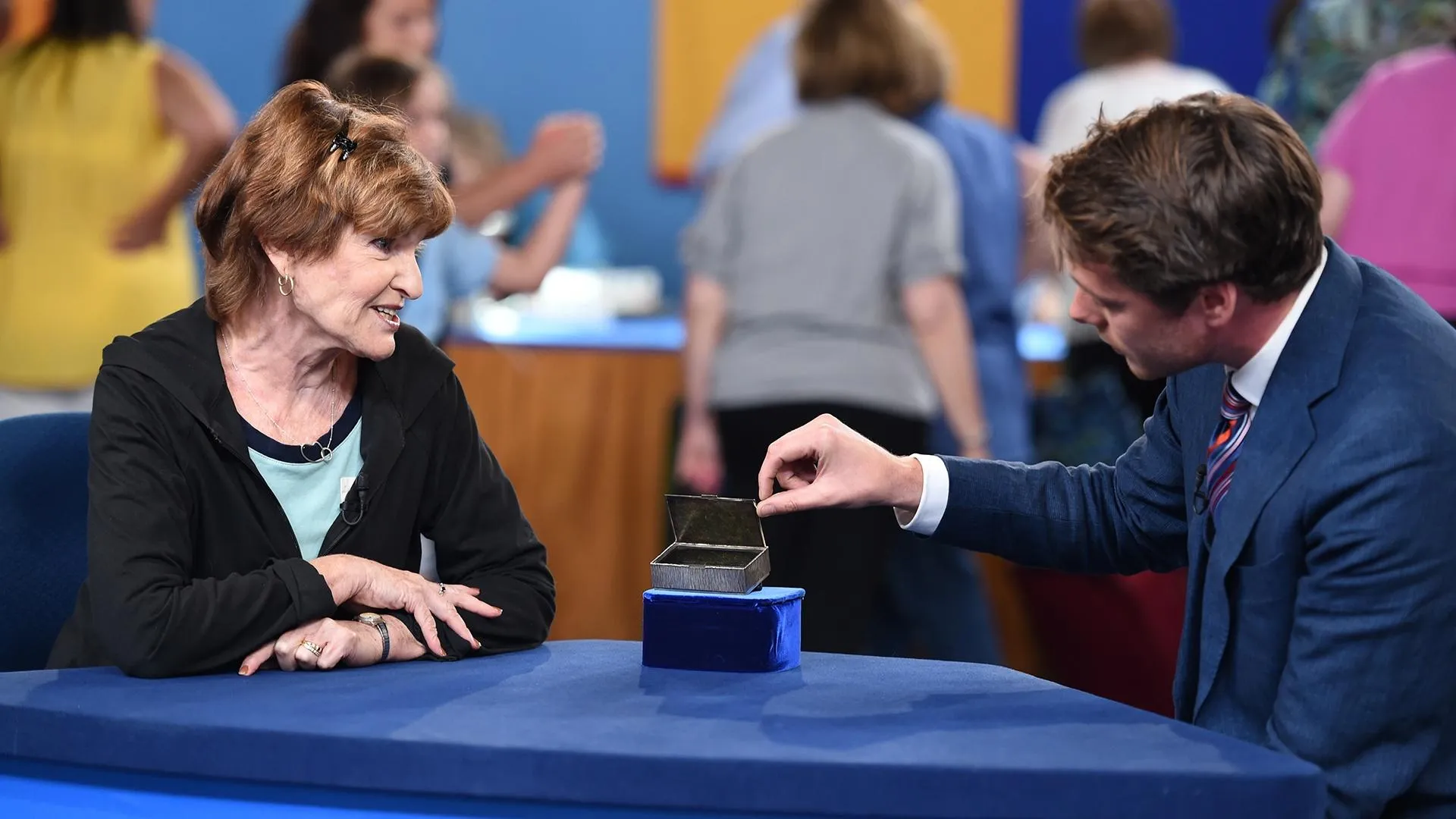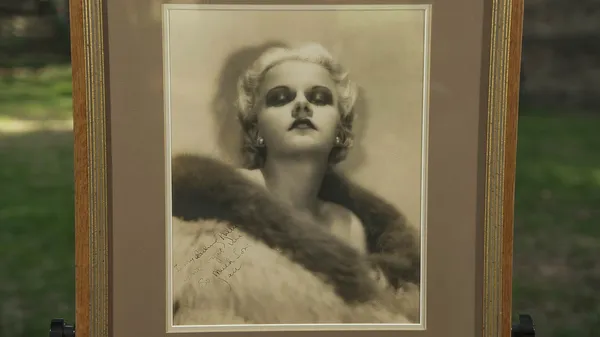GUEST: I inherited it from my grandmother a few years ago when she died. And I loved her very much and I love this chair. We've done some genealogy research and we think that the family was originally Dutch and came to Bergen County, New Jersey, quite a long time ago.
APPRAISER: Like, how long ago do you think?
GUEST: I don't know if it would be late 1600s or early 1700s.
APPRAISER: Okay.
GUEST: Something like that.
APPRAISER: I've been watching you look at this chair and put your hands on it and everything, and I can tell that you love it.
GUEST: I do love it.
APPRAISER: Well, you should. It's such a rare survivor. What this chair represents is a school of chairmakers that began in the late 1600s, and the best ones were made in the late 17th, early 18th century, and then they kept doing it in the tradition of this elongated finial. And the earlier ones were going to have turnings like this in the back in between the slats. And the other thing this one has is those sausage turnings. That's one of the things, when you look at early American seating and you're looking for things that go way back that are rare survivors, this is one of them. This is probably from the first quarter of the 18th century. This chair is part of a group of seating that we find from Dutch descendant folks who were in New York and New Jersey. And the earliest ones were made in the New York area. In the old inventories that I've seen, they actually call it a "great chair." That's what it was called.
GUEST: It feels kind of throne-like.
APPRAISER: This was a very important piece of furniture in the house. This is where the patriarch of the family sat every night, probably, and read his newspaper or smoked his pipe or whatever. And the other thing is that it's been a revered thing in your family ever since then because it's been taken care of. These are very fragile. As they get old, they dry out and if you tipped the thing over the wrong way, you'd break the finial right off.
GUEST: Yeah, nobody's allowed to sit in it.
APPRAISER: I think this is probably a second-generation coat of paint on it. There's a lot of little brass decoration. And I was going to show everybody this rondelle on the side.
GUEST: I love that, yeah.
APPRAISER: I think what happened was, sometime after the early 1800s, they decided that they were going to jazz it up a little bit, maybe during the Regency period. But it didn't really hurt anything. I think that might even be a patriotic thing. And the seat is fiber rush, and my guess is that's probably a replacement. In the 18th century, it would have been bigger twine in the rush.
GUEST: Oh, interesting.
APPRAISER: For insurance purposes, a chair like this-- I'm being conservative-- would be $6,000.
GUEST: Wow. Wow, okay. Yeah, that's a surprise.
APPRAISER: Ten to 12 years ago, this chair would have probably sold for $12,000 or $15,000.
GUEST: Wow.











